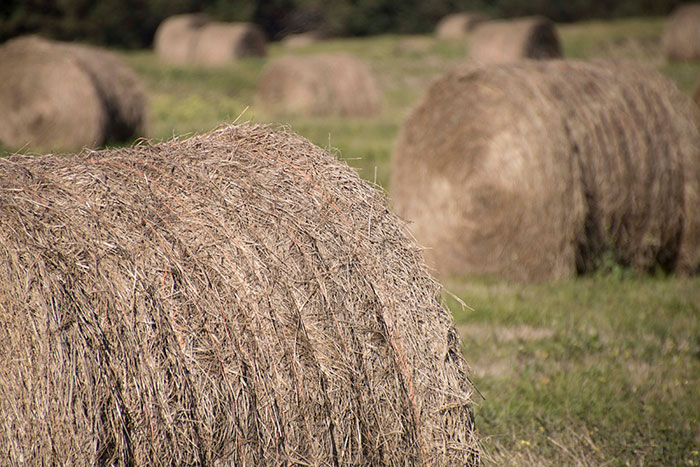
Leaving new bales in the field is like leaving dirty dishes in the sink. Sure, it’s convenient at the time, but in both situations after a while they begin to stink. You can end up enabling future unwanted mold growth and, in the case of hay, inhibit desirable forage growth beneath the bale.
In most cases, any bales left on the field are potentially damaging the next cutting’s yield. Bruce Anderson, University of Nebraska extension forage specialist, cautions that plants are often killed if covered by bales for more than a week or two. In addition, this creates the perfect environment for weed growth and sufficient time for them to spread.
“Most damage, though, is due to wheel traffic on the regrowth,” Anderson warns in a recent CropWatch newsletter. “Studies have shown that when fields are dry, plants driven on right after harvest and before regrowth occurs will yield 5 to 7 percent less at the next cutting.”
He goes on to say that waiting just one week to remove bales with regrowth underway cuts yields by over 25 percent and fewer plants survived.
“Worse yet is removing bales when fields are wet. Wheel traffic will cause much more compaction and yield loss exceeding 30 percent,” Anderson continues.
Removing bales from fields quickly and avoiding driving on wet ground promote regrowth postcutting. Another step toward minimizing compaction and damage is following the same wheel tracks to limit the total damaged area.
“Hayfields must be driven on, of course, to remove bales after harvest, but you can lessen damage and future yield loss by controlling where, when, and how often you drive,” Anderson concludes.

Lauren Peterson is serving as the 2017 Hay & Forage Grower summer editorial intern. She is from Wyanet, Ill., and currently attends Kansas State University where she is pursuing a degree in agricultural communications and journalism. While at school, Lauren works at the KSU dairy farm and is an active member of the Horseman’s Association.

